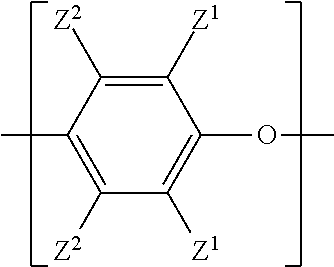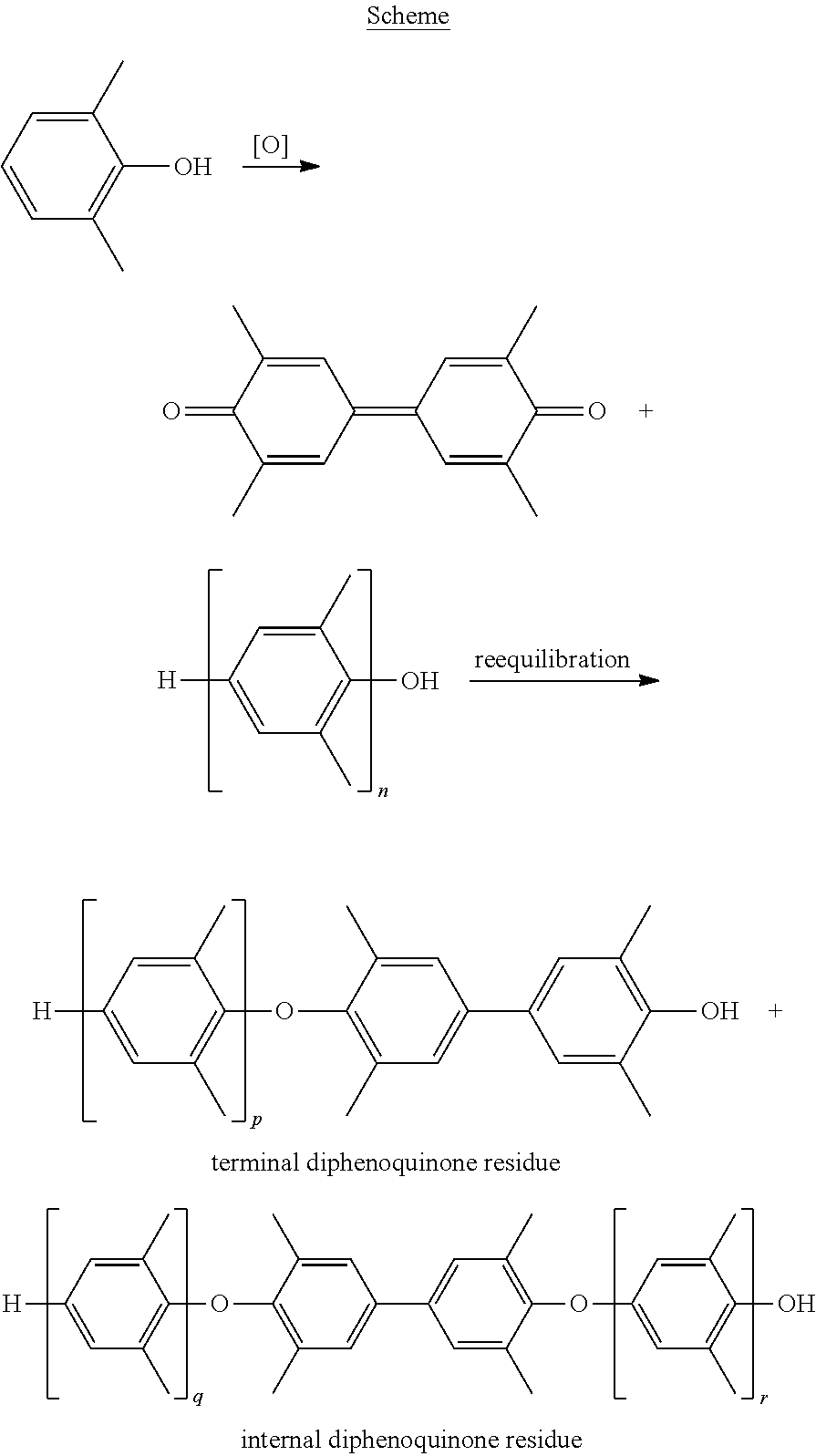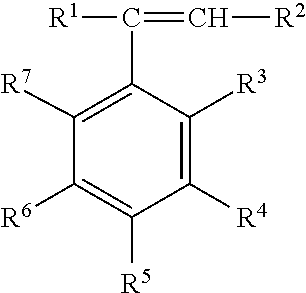Impact-Resistant Poly(Arylene Ether) Resins with Improved Clarity
a technology of arylene ether and resin, which is applied in the direction of film/foil adhesives, rigid containers, packaging, etc., can solve the problems of resins with reduced impact resistance scores relative to resins without these additives, and achieve the effects of improving multiaxial impact scores, high optical clarity and impact resistan
- Summary
- Abstract
- Description
- Claims
- Application Information
AI Technical Summary
Benefits of technology
Problems solved by technology
Method used
Image
Examples
embodiment 1
[0311]A composition comprising:
[0312](a) a poly(arylene ether);
[0313](b1) a radial block copolymer of an alkenyl aromatic monomer and a conjugated diene; wherein the radial block copolymer has 50 to about 70 weight percent of repeating units derived from the alkenyl aromatic monomer; wherein the radial block copolymer has a number average molecular weight of about 50,000 to about 70,000 atomic units;
[0314](b2) a linear block copolymer of an alkenyl aromatic monomer and a conjugated diene; wherein the linear block copolymer has 55 to about 70 weight percent of repeating units derived from the alkenyl aromatic monomer;
[0315]wherein the ratio of (b1) to (b2) is 0.5:1 to 4:1;
[0316](c) one or more optical enhancing agents; and
[0317](d) a hydrocarbon resin selected from the group consisting of hydrogenated alicyclic hydrocarbon resins and hydrogenated terpene resins;
[0318]wherein the composition is characterized by the following properties:[0319](i) a multiaxial impact of at least 20 J as...
embodiment 2
[0322]A composition comprising:
[0323](a) a poly(arylene ether);
[0324](b1) a radial block copolymer of an alkenyl aromatic monomer and a conjugated diene; wherein the radial block copolymer has about 50 to about 70 weight percent of repeating units derived from the alkenyl aromatic monomer and a number average molecular weight of about 50,000 to about 70,000 atomic units;
[0325](b2) a linear block copolymer of an alkenyl aromatic monomer and a conjugated diene; wherein the linear block copolymer has about 55 to about 70 weight percent of repeating units derived from the alkenyl aromatic monomer; wherein the ratio of (b1) to (b2) is 0.5:1 to 4:1;
[0326](c) one or more optical enhancing agents; and
[0327](d) a hydrocarbon resin selected from the group consisting of hydrogenated alicyclic hydrocarbon resins and hydrogenated terpene resins;
[0328]wherein the composition is characterized by one or more of the following properties:[0329](i) a multiaxial impact of at least 20 J as measured by A...
embodiment 3
[0332]The composition of Embodiments 1-2, further comprising (e) a flame retardant.
PUM
| Property | Measurement | Unit |
|---|---|---|
| weight percent | aaaaa | aaaaa |
| haze | aaaaa | aaaaa |
| percent transmittance | aaaaa | aaaaa |
Abstract
Description
Claims
Application Information
 Login to View More
Login to View More - R&D
- Intellectual Property
- Life Sciences
- Materials
- Tech Scout
- Unparalleled Data Quality
- Higher Quality Content
- 60% Fewer Hallucinations
Browse by: Latest US Patents, China's latest patents, Technical Efficacy Thesaurus, Application Domain, Technology Topic, Popular Technical Reports.
© 2025 PatSnap. All rights reserved.Legal|Privacy policy|Modern Slavery Act Transparency Statement|Sitemap|About US| Contact US: help@patsnap.com



